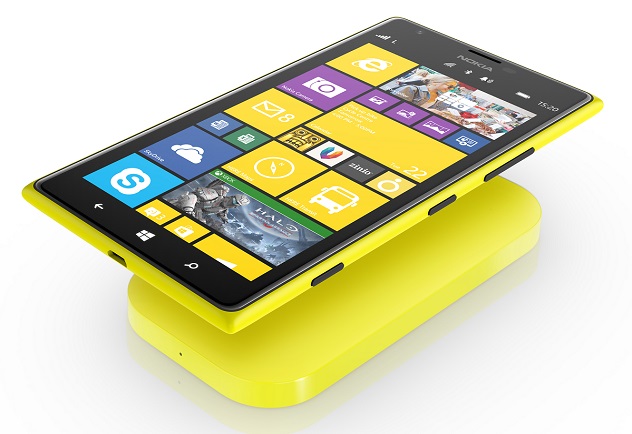The Nokia Lumia 1520’s six-inch display, high-end camera and accessories make it seem more like a tablet than a phone. It’s larger than the smaller models of the Samsung Galaxy Note and the 1520’s larger screen affords the user an extra row of tiles, making it seem more tablet-like than Nokia’s smaller Lumia handsets.
But this extra screen real estate also makes using the on-screen keyboard very easy and reduces the amount of scrolling that’s necessary to see the tiles you’re most likely to need and the extra row of tiles allows you to put the most important applications wherever you want.
The downside is that it’s so large it’s a little unwieldy to use the Lumia 1520 for its primary function – a phone. It’s too big to fit comfortably in a shirt pocket, but Nokia appears to have recognised this as it has released an optional integrated case and cover that seems identical to the cases Apple sells with the iPad Air and even includes the tri-fold hinges that allow it to be propped on its side for viewing videos.
Camera in focus
 Like many recent Lumia models, the 1520 places a lot of emphasis on its camera features. It has a 20 megapixel sensor and has the Nokia Camer app which combines the the flexibility of Nokia Pro Camera and the features of Nokia Smart Camera.
Like many recent Lumia models, the 1520 places a lot of emphasis on its camera features. It has a 20 megapixel sensor and has the Nokia Camer app which combines the the flexibility of Nokia Pro Camera and the features of Nokia Smart Camera.
Nokia claims that the Lumia 1520 camera will record full-high-definition video, but this proved difficult to verify, since the Lumia 1520 lacks an HD video output. Presumably, you can capture your video to the internal Secure Digital (SD) card (the phone will handle cards up to 64GB), transfer it to another device, and connect that device to an HD television or monitor to view it.
While I couldn’t tell for sure if the video the device captures is really HD, it does take nice photos and videos that benefit from the device’s optical stabilisation feature.
Productivity options
As is the case with many Windows Phone 8 devices, the Lumia 1520 includes a mobile version of Microsoft Office that works with SkyDrive (also included) to let you view and edit documents. You can also create documents using the included on-screen keyboard, but despite the device’s size, it’s still too small to comfortably type large documents.
And unlike some other phablets, Nokia does not include a stylus with the Lumia 1520, not even as an option, meaning that you’ll be doomed to thumb-typing, although the size of the screen does make that easier than it might be on another phone, such as an iPhone 5S.
But the Lumia 1520’s size is an advantage in other areas. Nokia has filled as much space as possible with the device’s 3,400mAh battery, which can be wirelessly charge, meaning the phone can run for several days on a single charge in the right conditions.
Size matters
 Using the Nokia 1520 is like using any other Windows Phone—writ large. When you hold it up to your ear to talk, it seems clumsy. But these days, it seems as if using smartphones to actually make phone calls is secondary to using them for other computing purposes, such as texting or viewing.
Using the Nokia 1520 is like using any other Windows Phone—writ large. When you hold it up to your ear to talk, it seems clumsy. But these days, it seems as if using smartphones to actually make phone calls is secondary to using them for other computing purposes, such as texting or viewing.
The size might not even be a problem if you spend most of your time texting or using the mobile Internet. The screen is clear and easy to read, but the white matte finish picks up dirt very easily, meaning you might want to opt for yellow, black or red.
Overall, I found the Nokia Lumia 1520 to be a useful device in situations where its size doesn’t get in the way. It excels at tasks that use the keyboard, for example, as well as shooting and displaying videos, although some means of outputting the video to a larger monitor or an HD television would be welcome.
Do you know all about Microsoft Windows Phone? Take our quiz.





